How many cups in a litre? If you’ve ever found yourself pondering this common measurement conversion question in the kitchen, you’re not alone. Understanding the relationship between cups and litres is a fundamental aspect of cooking and baking, allowing you to follow recipes accurately and achieve delicious results.
Whether you’re an aspiring chef, a passionate home cook, or simply curious about culinary measurements, this article will shed light on the conversion between cups and litres, providing clarity and practical knowledge to enhance your culinary endeavours. So, let’s dive in and unravel the mystery of “how many cups in a litre.”
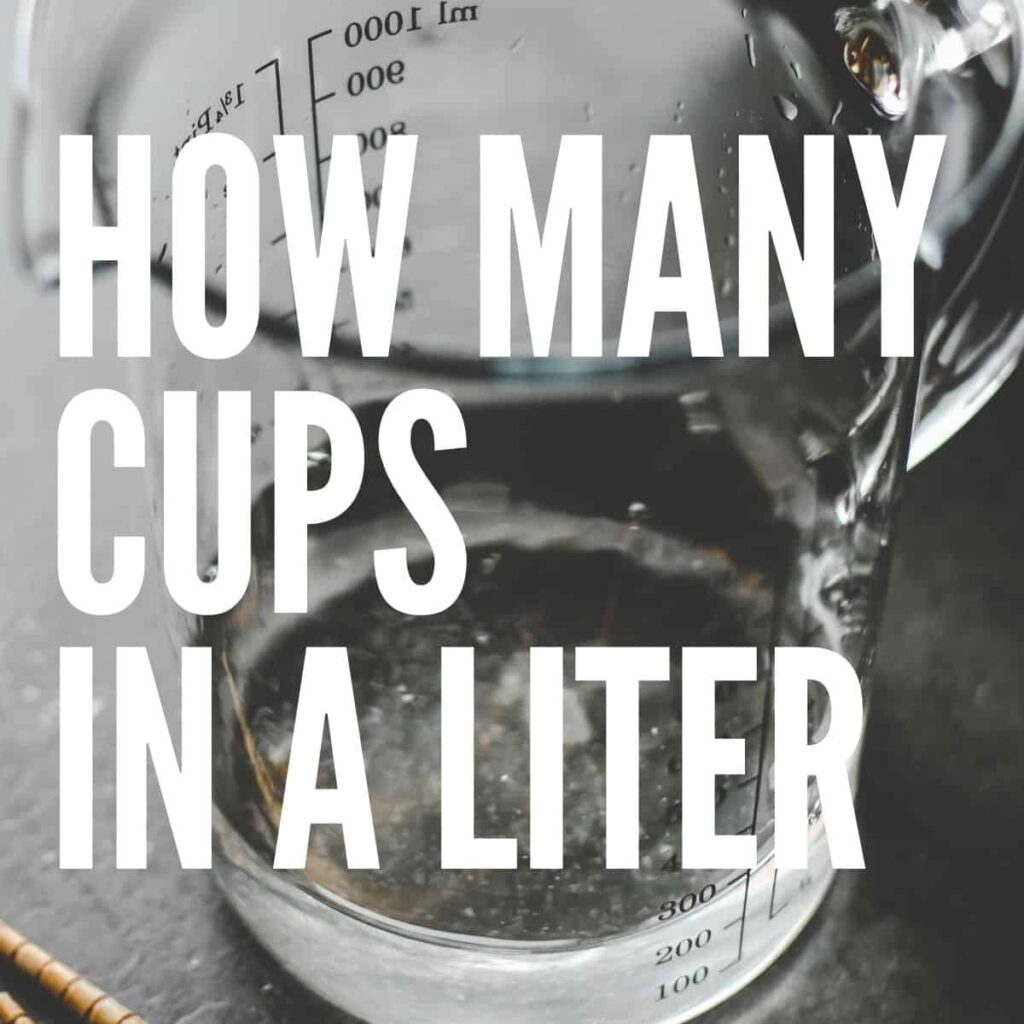
What is a Cup
A cup is a unit of measurement commonly used in cooking and baking. It is a volume unit primarily used to measure liquid ingredients, such as water, milk, or oil. The cup measurement can also be used for dry ingredients, such as flour or sugar, but it may not be as accurate as weight measurements for precise baking.
In the United States, a cup is equivalent to 8 fluid ounces or approximately 236.6 millilitres. However, it’s important to note that the cup measurement can vary slightly in different countries. For example, in the United Kingdom, a cup is equal to 10 fluid ounces or approximately 284 millilitres.
To ensure accuracy in recipes, it’s recommended to use standardized measuring cups specifically designed for liquid or dry ingredients. These cups typically have markings for various measurements, including 1/4 cup, 1/2 cup, and 1 cup, allowing for precise measurements in cooking and baking.
Related: How Many Teaspoons Are in a Tablespoon
What Is a Litre
The “litre” is a metric measurement. The litre was introduced in France in 1795 by the Republican government after overthrowing the monarchy and all trappings associated with that government, and so began the metric system. In 1901 international agreement was reached to redefine the litre as the space occupied by 1 kg of pure water.
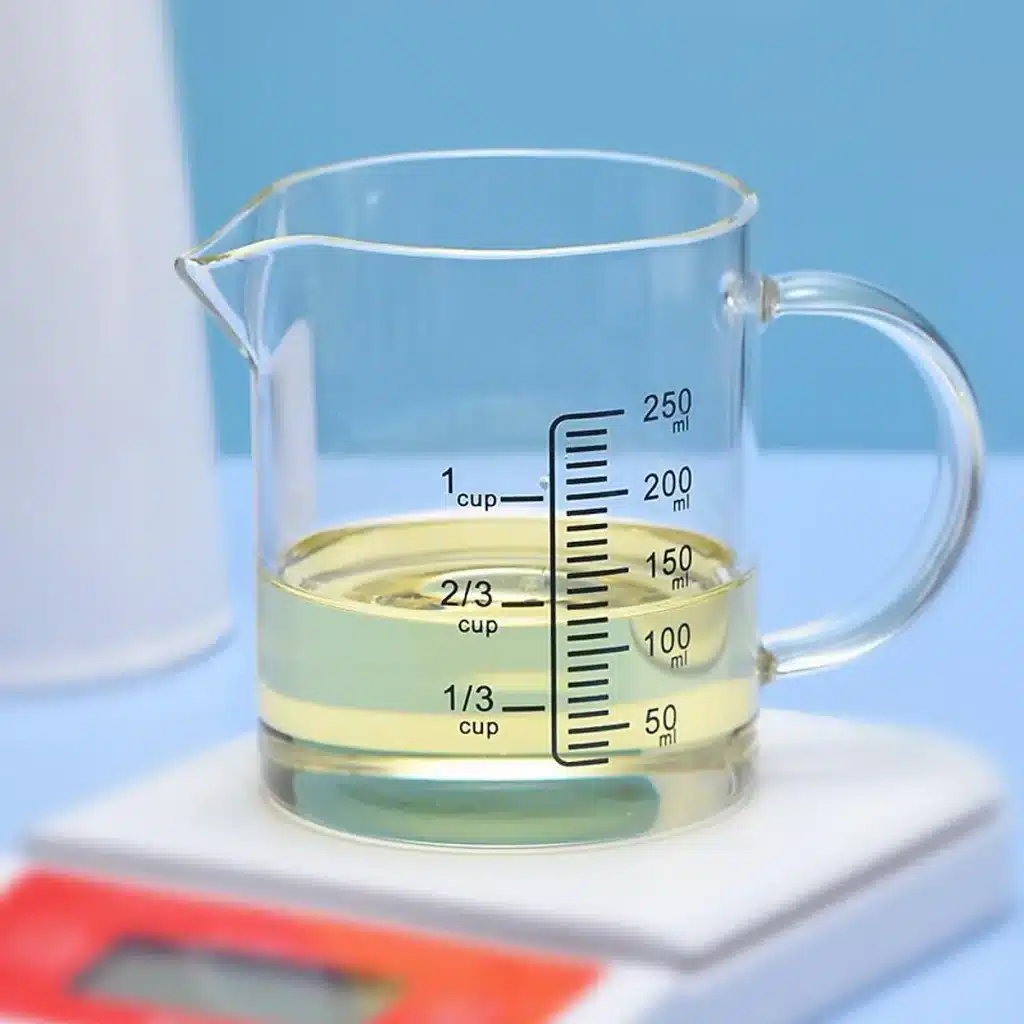
How many Cups in a Litre
The best way is to use a reliable kitchen scale, but if you are fond of the US measurement system, get measuring cups and spoons set. Since there are so many different cups (the US customary and legal cups, imperial cups, etc.), it seems easier to measure liquid ingredients in millimetres, deciliters, and litres.
So how many cups make a litre? The litre value depends on the type of cup.
In the US system,
1 litre equals 4.2267 U.S. customary cups, where
1 US cup = 8 US fluid ounces and
1 litre = 33.814 US fluid ounces.
1 litre equals 4.1667 US legal cups.
Quite roughly, to measure one litre, round it to four 8-ounce cups and add ¼ cup. Suppose you need half a litre; measure 2 cups and 2 tablespoons.
1 litre equals 4.3994 Canadian cups.
1 litre equals 5.5556 traditional Japanese cups.
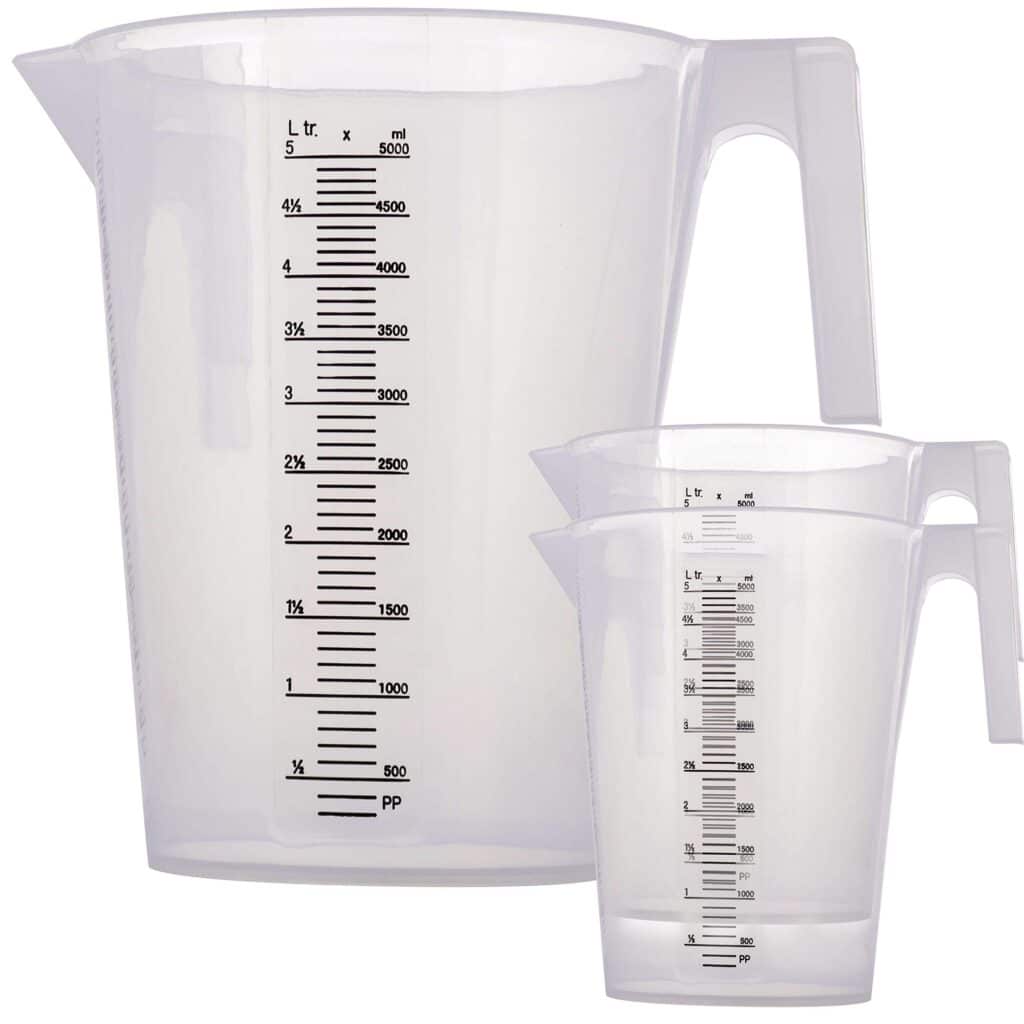
Chart Conversion for How Many Cups in Litre?
- 1 cup = 0.236 litres
- 1 pint = 0.47 litres
- 1 quart = 1.06 litres
- 1 gallon = 3.78 litres
| Litres | Cups | Pints | Quarts | Gallons |
| 0.5 litre | 2.12 cups | 1.06 pints | 0.53 quarts | 0.13 gallons |
| 1 litre | 4.23 cups | 2.11 pints | 1.06 quarts | 0.26 gallons |
| 2 litres | 8.46 cups | 4.22 pints | 2.12 quarts | 0.53 gallons |
| 5 litres | 21.15 cups | 10.55 pints | 5.30 quarts | 1.32 gallons |
| 10 litres | 42.30 cups | 21.10 pints | 10.60 quarts | 2.64 gallons |
Related: How many Tablespoons in a Cup (convert tbsp to cup)
Basic Volume Conversion
Here is a quick conversion chart from litres to cups to pints to quarts to gallons.
It takes into consideration that
- 1 cup = 0.236 litres
- 1 pint = 0.47 litres
- 1 quart = 1.06 litres
- 1 gallon = 3.78 litres
| Litres | Cups | Pints | Quarts | Gallons |
| ½ L | 2.11 c | 1.06 pt | 0.53 qt | 0.13 gal |
| 1 L | 4.23 c | 2.11 pt | 1.06 qt | 0.26 gal |
| 2 L | 8.45 c | 4.23 pt | 2.11 qt | 0.53 gal |
| 3 L | 12.68 c | 6.34 pt | 3.17 qt | 0.79 gal |
| 4 L | 16.91 c | 8.45 pt | 4.23 qt | 1.06 gal |
| 5 L | 21.13 c | 10.67 pt | 5.28 qt | 1.32 gal |
US Cups Vs Imperial Cups
The difference between US cups and Imperial cups lies in their volume measurements. Here are the specifics:
- US Cups: In the United States, a cup is defined as 8 fluid ounces (fl oz) or approximately 236.6 millilitres (ml). This measurement is commonly used in American recipes.
- Imperial Cups: In the United Kingdom and some other Commonwealth countries, an Imperial cup is defined as 10 fluid ounces (fl oz) or approximately 284 millilitres (ml). This measurement is used in British and Commonwealth recipes.
It’s important to note that the volume difference between US cups and Imperial cups can lead to slight variations in recipe outcomes. When following a recipe, it’s crucial to use the appropriate cup measurement specified in the recipe, depending on whether it’s a US or Imperial cup.
To avoid confusion, it’s often recommended to convert measurements between US cups and Imperial cups when working with recipes from different regions. This can be done by adjusting the proportions accordingly or by using more precise measurements such as fluid ounces or millilitres.
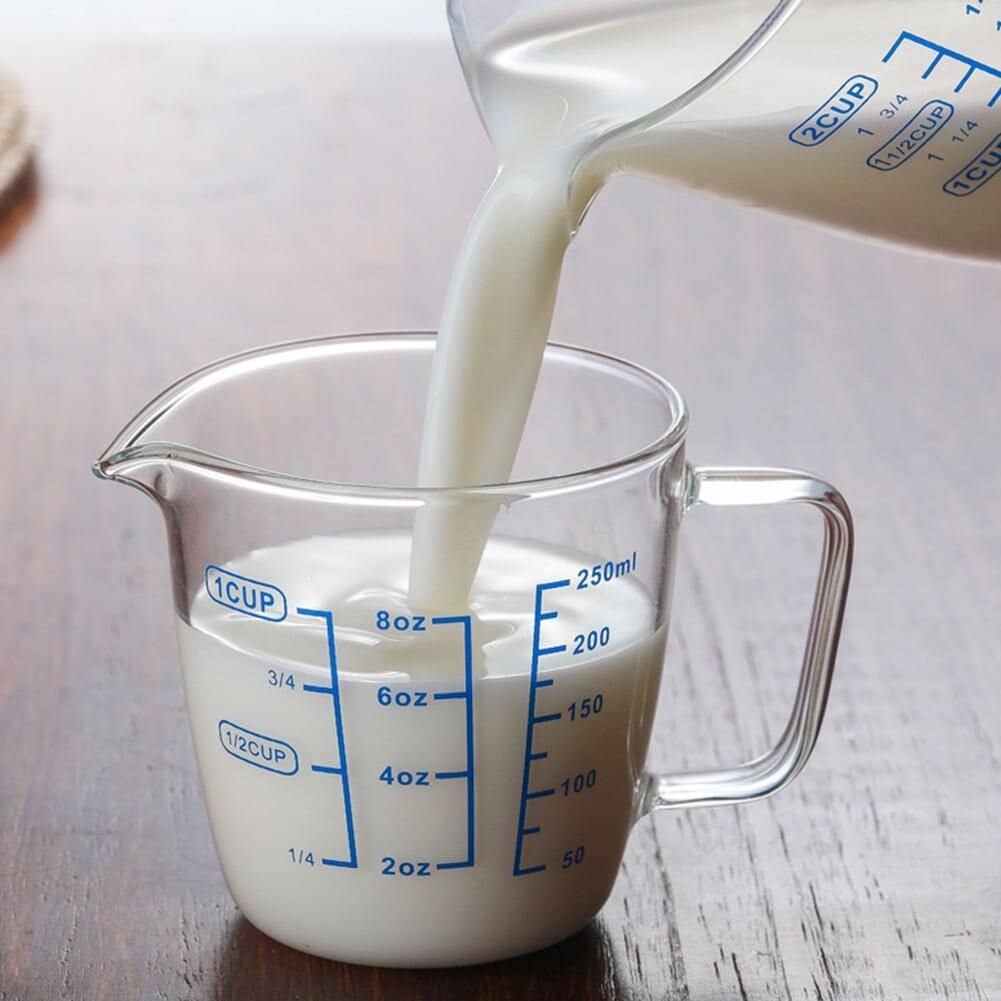
How to convert Litres to cups
To convert litres to cups, you can use the following conversion factors:
1 litre = 4.22675 cups (US cups) 1 litre = 3.51951 cups (Imperial cups)
Here’s how you can convert litres to cups:
- Determine the type of cups: Decide whether you want to convert litres to US cups or Imperial cups.
- Choose the appropriate conversion factor: Use the conversion factor based on the type of cups you’ve chosen. For example, if you want to convert litres to US cups, use the conversion factor of 4.22675 cups per litre.
- Multiply the number of litres by the conversion factor: Multiply the number of litres you have by the conversion factor to obtain the equivalent number of cups.
The number of cups = Number of litres × Conversion factor - Round the result if necessary: Depending on your desired level of precision, you may choose to round the result to the nearest whole number or a specific decimal place.
Here’s an example conversion:
Example: Convert 2 litres to US cups.
Number of cups = 2 litres × 4.22675 cups/litre Number of cups ≈ 8.4535 cups
Therefore, 2 litres is approximately equal to 8.4535 cups (US cups).
Related: Gluten-Free Pancakes Recipe (Best Vegan Option)
How to Convert Cups to Litres
To convert cups to litres, you can use the following conversion factor:
1 cup = 0.2366 litres (approximately)
Here’s how you can convert cups to litres:
- Obtain the number of cups you want to convert.
- Multiply the number of cups by the conversion factor of 0.2366.
Number of litres = Number of cups × 0.2366 - Round the result if necessary: Depending on your desired level of precision, you may choose to round the result to the nearest decimal place.
Here’s an example conversion:
Example: Convert 5 cups to litres.
The number of litres = 5 cups × 0.2366 Number of litres ≈ 1.183 litres
Therefore, 5 cups are approximately equal to 1.183 litres.
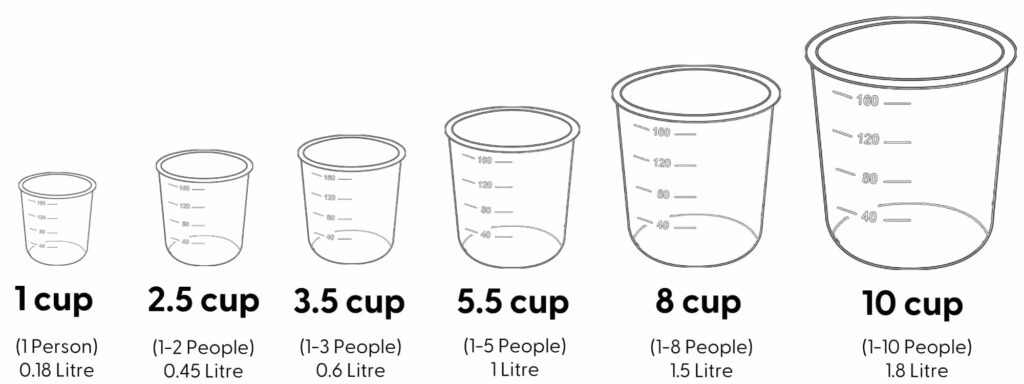
Related: How Long Is Chicken Good for in the Fridge? A Comprehensive Guide
Importance of Cups and Litres for Cooking and Baking
The cup and litre measurements are essential in cooking and baking for several reasons:
1. Standardized Measurements
Cups and litres provide standardized units of measurement, allowing for consistent and reproducible results in recipes. By using these measurements, you can follow recipes accurately and achieve the intended flavour, texture, and consistency of the final dish.
2. Convenience and Familiarity
Cups are commonly used in many recipe books, especially in the United States, while litres are frequently used in other parts of the world. These measurements are familiar to home cooks and provide a convenient way to measure ingredients without the need for a scale.
3. Liquid and Dry Ingredient Measurements
Cups and litres are versatile units that can be used for both liquid and dry ingredients. For liquids, measuring cups with marked increments make it easy to pour and measure precise amounts. For dry ingredients like flour or sugar, cups provide a practical measurement that allows for quick and consistent portioning.
4. Recipe Scaling
Cups and litres are helpful when scaling recipes up or down. Using these volume measurements simplifies the process if you want to double or halve a recipe. You can easily adjust the quantities of ingredients while maintaining the same ratios and proportions.
5. International Adaptability
While cup measurements can vary between countries, litres provide a globally recognised metric measurement for liquids. Using litres allows for a seamless adaptation of recipes across different regions and ensures consistent results regardless of the preferred cup measurement system.
6. Accessibility
Measuring cups and liquid measuring jugs are commonly found in households, making it easy for home cooks to measure ingredients accurately. These tools are widely available and relatively inexpensive, making them accessible to cooks of all skill levels.
Related: 20+ Amazing Cookout Menu Ideas
Conclusion
In conclusion, understanding the conversion between cups and litres is a valuable skill for any cooking enthusiast. By mastering this fundamental measurement relationship, you can confidently tackle recipes from around the world, ensure accurate ingredient proportions, and achieve consistent results in your culinary creations.
Throughout this article, we have explored the concept of cups and litres, delving into their definitions and conversion factors. We’ve learned that while a cup may vary slightly depending on the country, it is commonly recognized as 8 fluid ounces or approximately 236.6 millilitres in the United States. On the other hand, the Imperial cup used in the United Kingdom and other Commonwealth countries is defined as 10 fluid ounces or approximately 284 millilitres.
By using the conversion factors provided, you can convert litres to cups or vice versa, allowing you to adapt recipes, measure ingredients accurately, and confidently explore new culinary adventures. Remember, precise measurements can greatly impact the taste, texture, and overall success of your dishes.
Armed with this knowledge, you can confidently navigate the world of recipes, confidently convert between cups and litres, and take your culinary skills to new heights. So go ahead, grab your measuring cups and embark on a delightful culinary journey where precision meets creativity.
Related: How to Boil Corn on the Cob
FAQs
Is a Litre more than a cup
There are 4.227 cups in a litre.
A cup is 8 fluid ounces and a litre is 33.8 fluid ounces. What is this? Cups and litres both measure the volume of liquids, so whether you need to know how many cups are in a litre or water, oil or a bottle of soda, there will always be about 4.3 cups in a litre!
Is 1 litre equal to 32 ounces?
There are roughly 34 fluid ounces in a litre of a liquid give or take
Is 250ml equal to 1 litre
250 ml is equivalent to 0.25 litres.
How many cups are in a litre of milk
There are 4.227 cups in a litre.
A cup is 8 fluid ounces and a litre is 33.8 fluid ounces.
